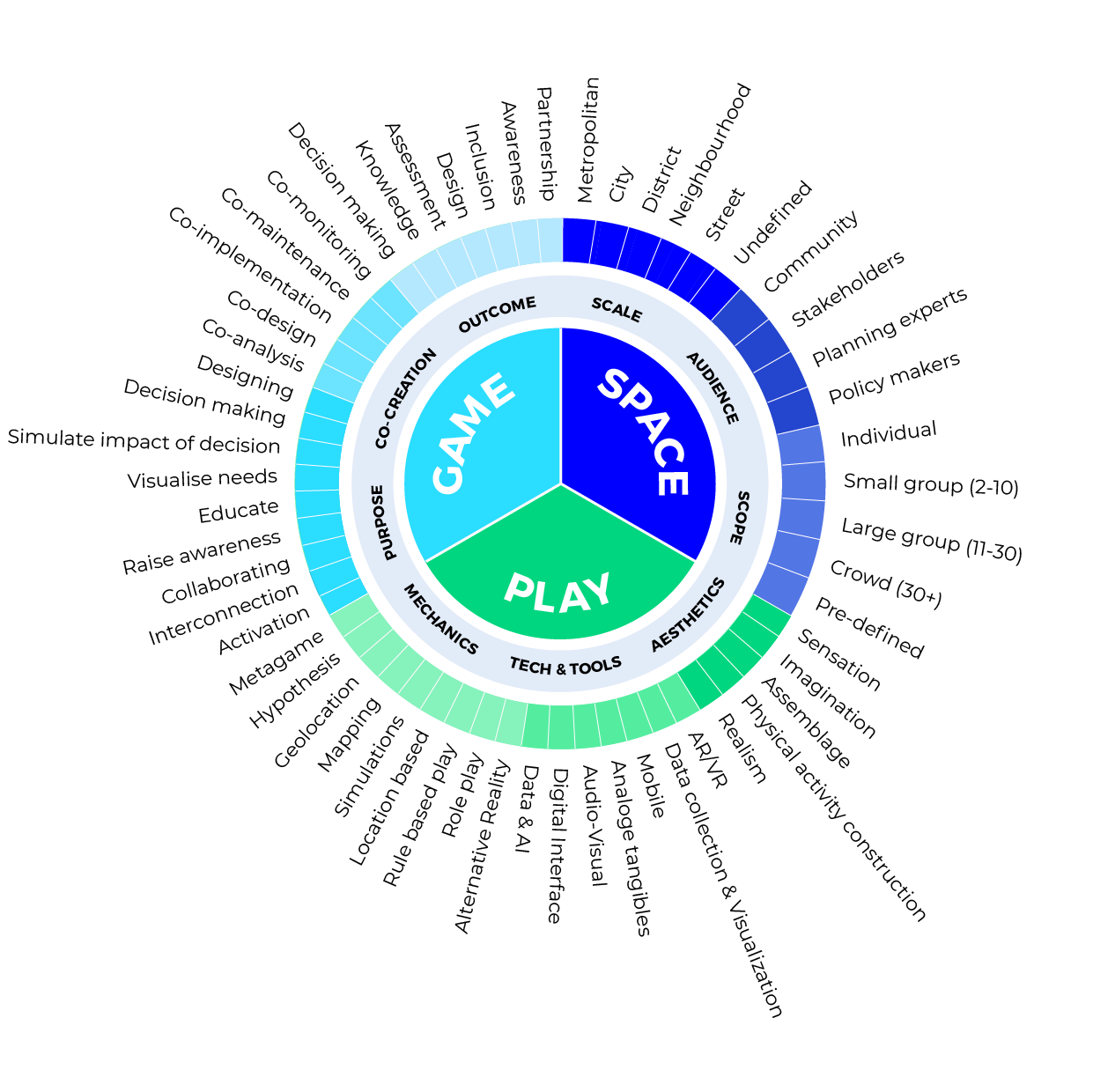| Line 14: | Line 14: | ||
----- | ----- | ||
< | </div> | ||
<div style="position:relative; background-color:transparent; margin:0px; text-align: left;"> | <div style="position:relative; background-color:transparent; margin:0px; text-align: left;"> | ||
{| id="mainpagenavigation" width="100%" | {| id="mainpagenavigation" width="100%" | ||
| Line 22: | Line 21: | ||
| colspan="2" | | | colspan="2" | | ||
==Methodological Notes== | ==Methodological Notes== | ||
|- | |- | ||
Revision as of 13:21, 10 November 2020
Public Play Space (PPS) is a project co-funded by the Creative Europe Programme of the European Union and developed by IAAC, BUas, and CLAC. It promotes innovative and creative practices for the co-design of inclusive, cohesive, and sustainable public spaces, through the use of games and digital technologies, in a transnational and European perspective, fostering the process of placemaking.
The objective of the Public Play Space Wiki Platform is to create a knowledge community on the use of digital technologies and games to enhance participatory processes for urban design and placemaking, allowing a wider dissemination of the best practices in this field and to facilitate knowledge sharing and the interaction among key stakeholders.
The first 30 projects uploaded in this PPS Community Platform are the result of an Open Call of Public Play Space Initiatives launched in December 2019 and from a competitive desk review selection.
After opening the discussion with these interesting cases, we invite you all to send us your project and initiative and to join our Public Play Space Community!
Methodological Notes | |
| The projects are analysed and described using an innovative framework, articulated into 3 concentric levels of analysis and categorisation. This analytical approach allows a deeper understanding of projects that shows a high level of complexity and sophistication, enabling the reader to extract learnings on the different impacts and strategies.
At the same time, this categorization will enable the reader to navigate the project according to different features, actions, and properties that characterize them. The first level of analysis describes each project based on the three categories of Space, Game, and Play.
| |

